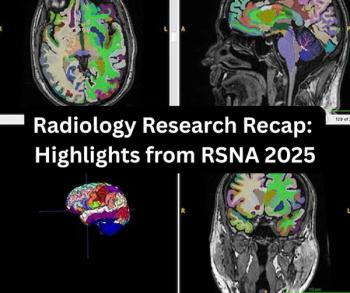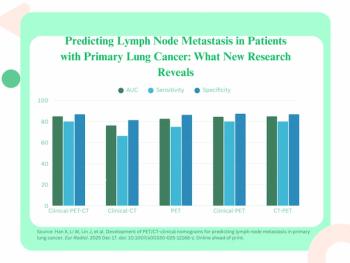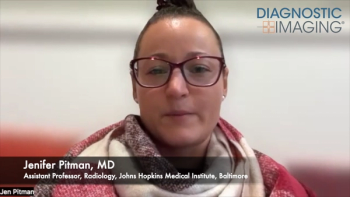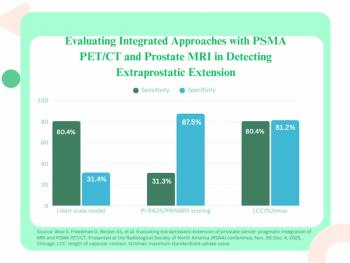
Can Contrast-Enhanced Mammography Provide a Viable Option for Breast Cancer Detection?
A new meta-analysis examines the diagnostic benefit of this emerging complementary modality.
In a recently published systematic review and meta-analysis involving 60 studies and over 10,600 patients, researchers found that contrast-enhanced mammography (CEM) provided high sensitivity and specificity in diagnosing breast cancer.
According to the
The study authors noted that a potential preference to employ CEM as opposed to contrast-enhanced MRI may stem “from its ability to correlate low-energy mammographic findings with enhancement.” They indicated this could be beneficial when it comes to assessing suspicious findings detected with mammography and supplemental breast cancer screening for patients with dense breasts. In subgroup analyses, CEM had a 95 percent pooled sensitivity and a 78 percent pooled specificity in the assessment of patients with dense breasts, and a 92 percent pooled sensitivity and an 84 percent pooled specificity in studies looking at mammography-detected suspicious findings.
Another benefit of CEM may be the screening of women who have undergone thoracic radiation therapy, according to lead author Andrea Cozzi, M.D., who is affiliated with the Department of Biomedical Sciences at Universita degli Studi di Milano in Milan, Italy, and colleagues. The study authors noted that these women have a higher risk of ductal carcinoma in situ with low neoangiogenesis, a finding that may be missed on CE-MRI but could be detected through the presence of calcifications on CEM.
“Interest in CEM stems from its potential to achieve the high sensitivity of a modality like breast MRI but without the associated limitations of MRI-limited accessibility and high cost,” wrote Manisha Bahl, M.D., M.P.H., a radiologist at Massachusetts General Hospital and Harvard Medical School,
While CEM does not have a specific Food and Drug Administration (FDA)-approved indication for breast cancer screening, Dr. Bahl wrote that large multicenter trials are currently underway to assess the screening capabilities of CEM.
Dr. Cozzi and colleagues conceded limitations of the study, including high heterogeneity, the small number of multicenter studies in their meta-analysis and a lack of randomized studies.
Newsletter
Stay at the forefront of radiology with the Diagnostic Imaging newsletter, delivering the latest news, clinical insights, and imaging advancements for today’s radiologists.



























